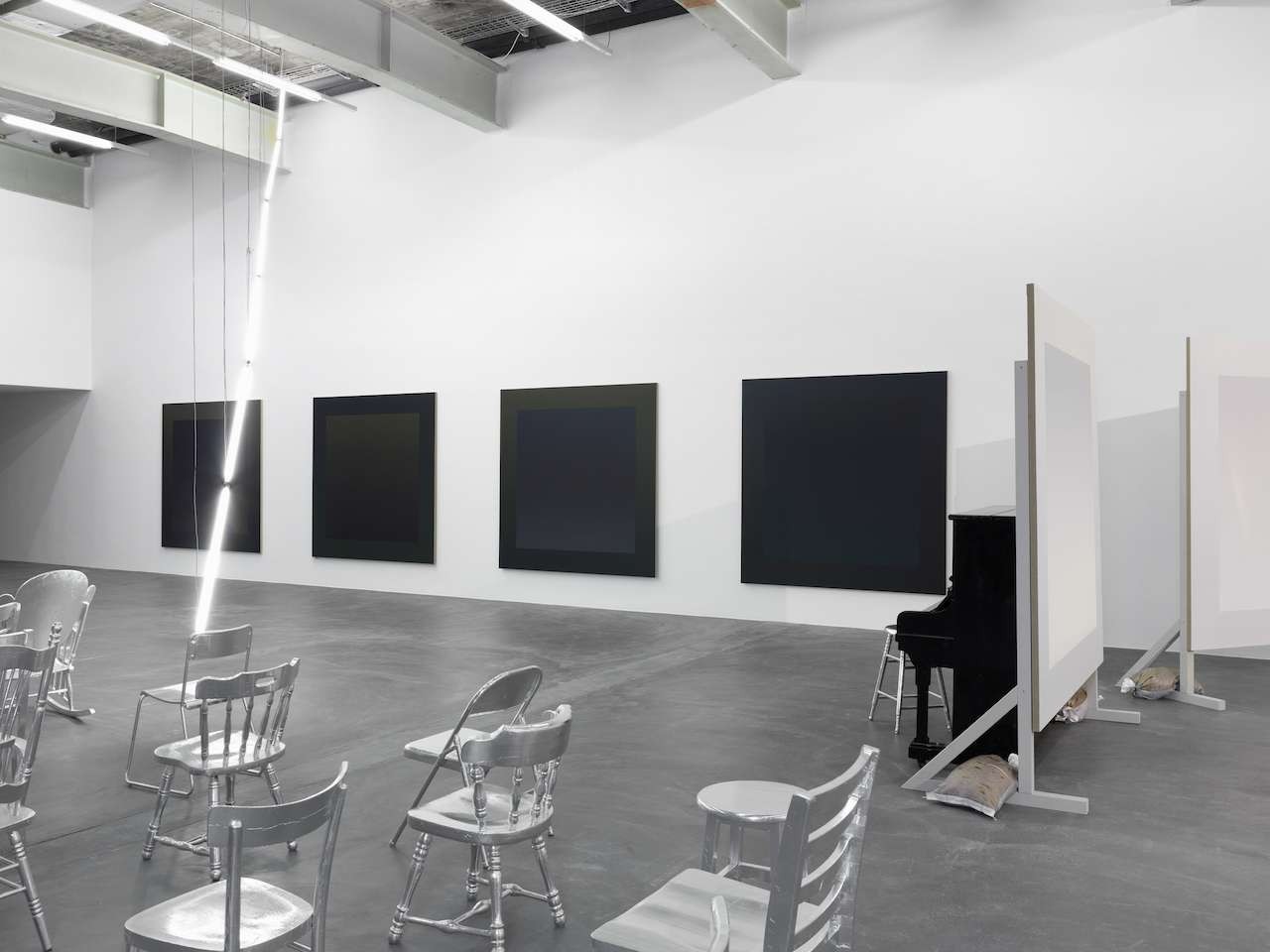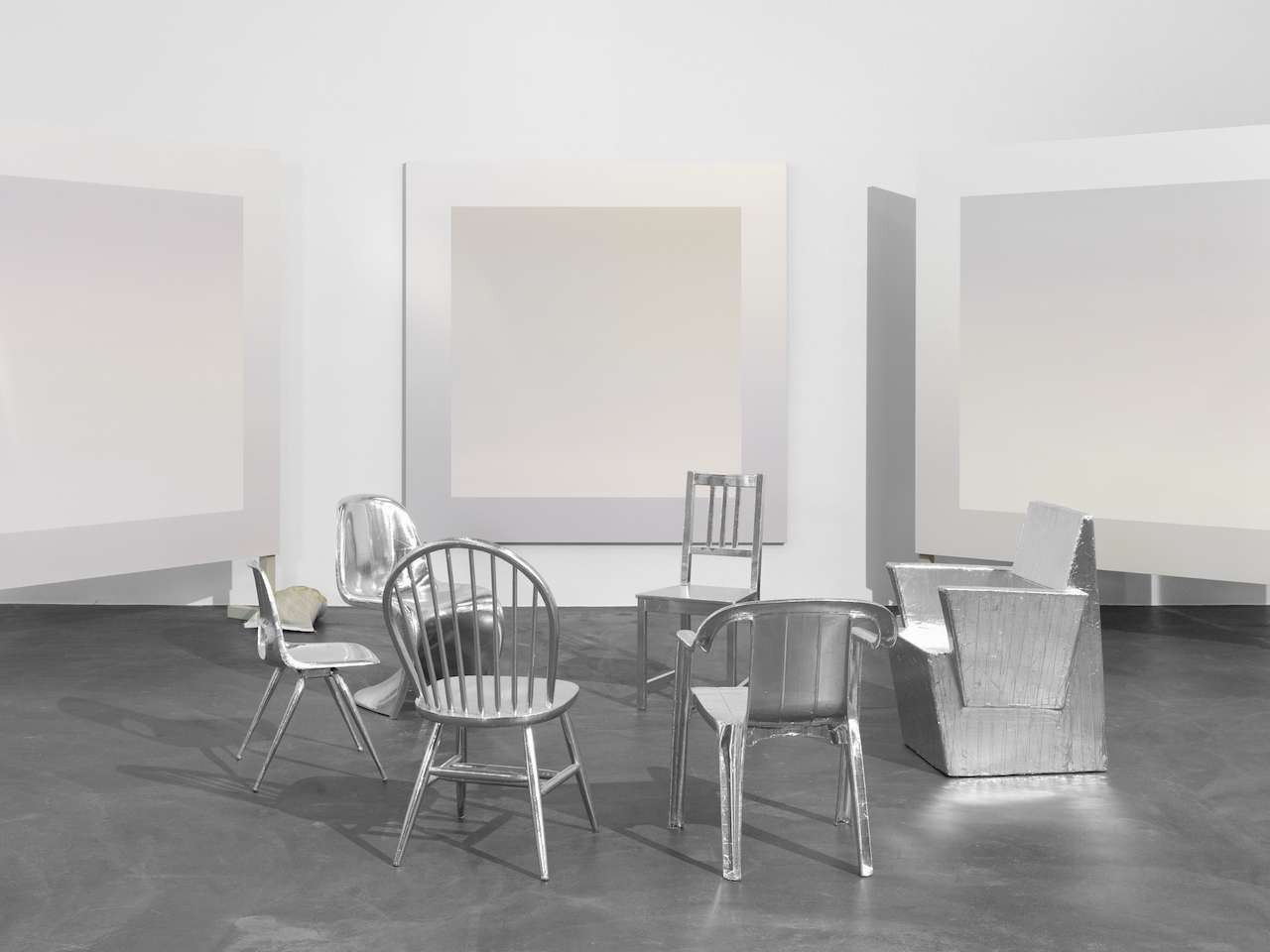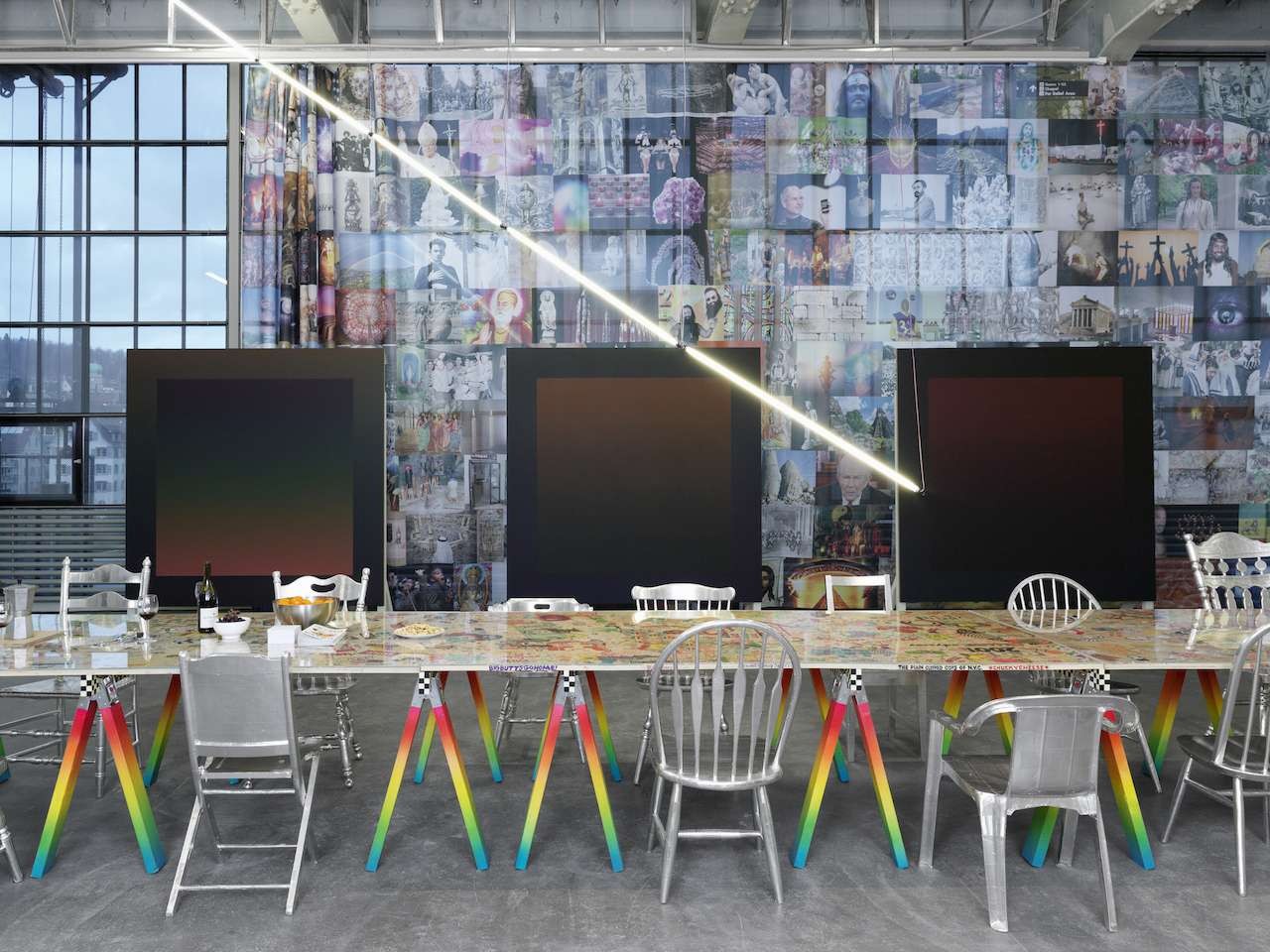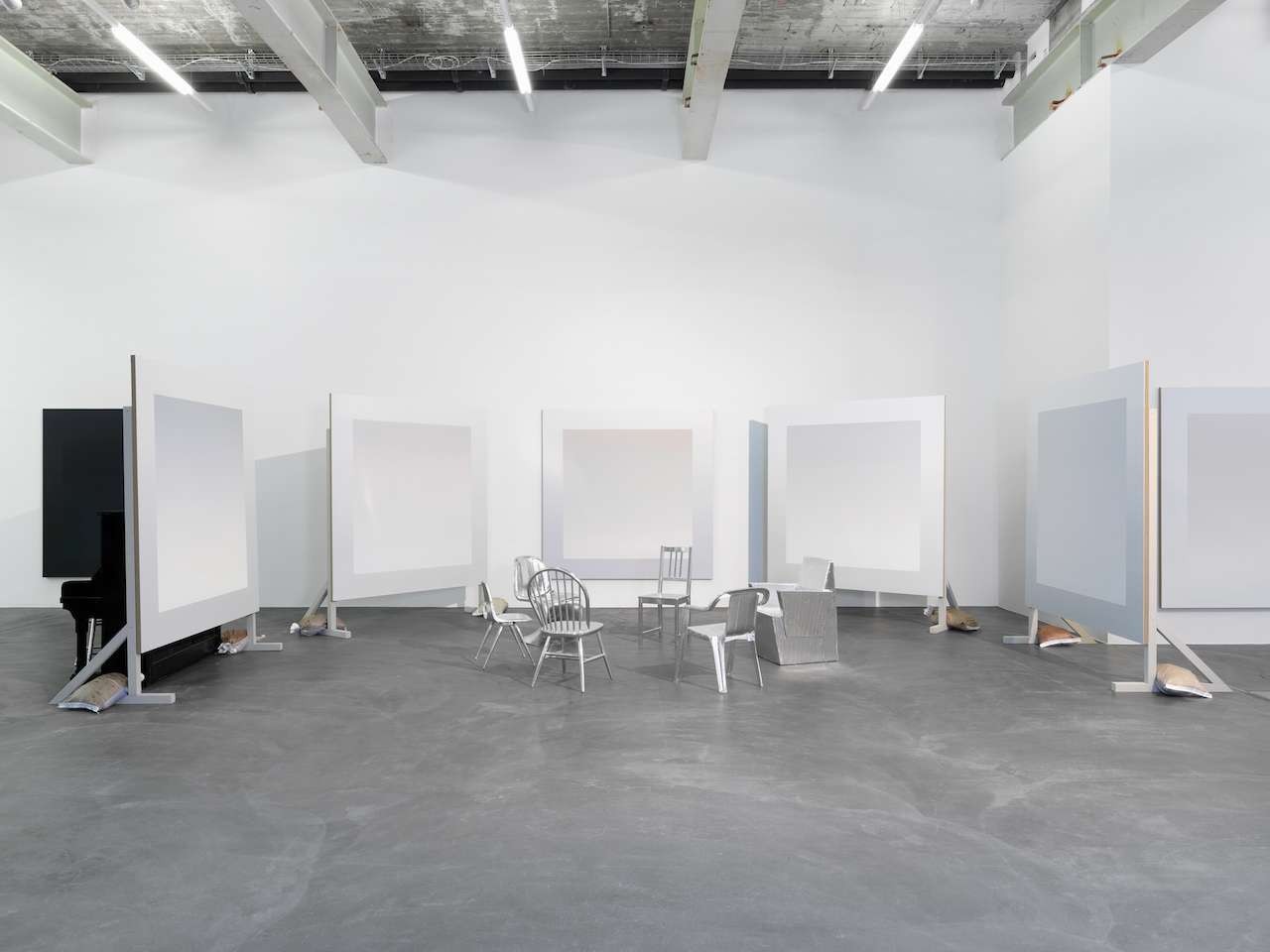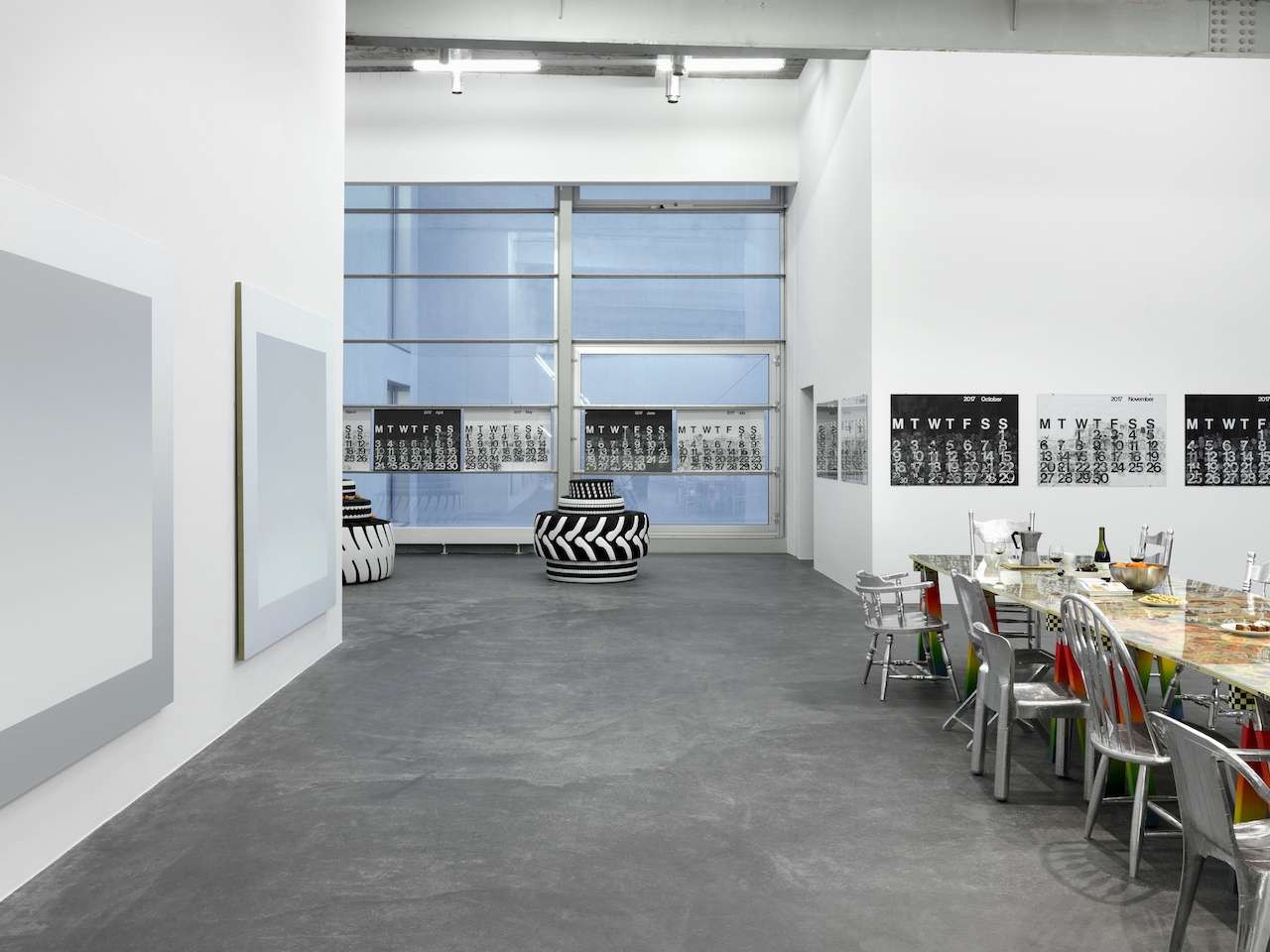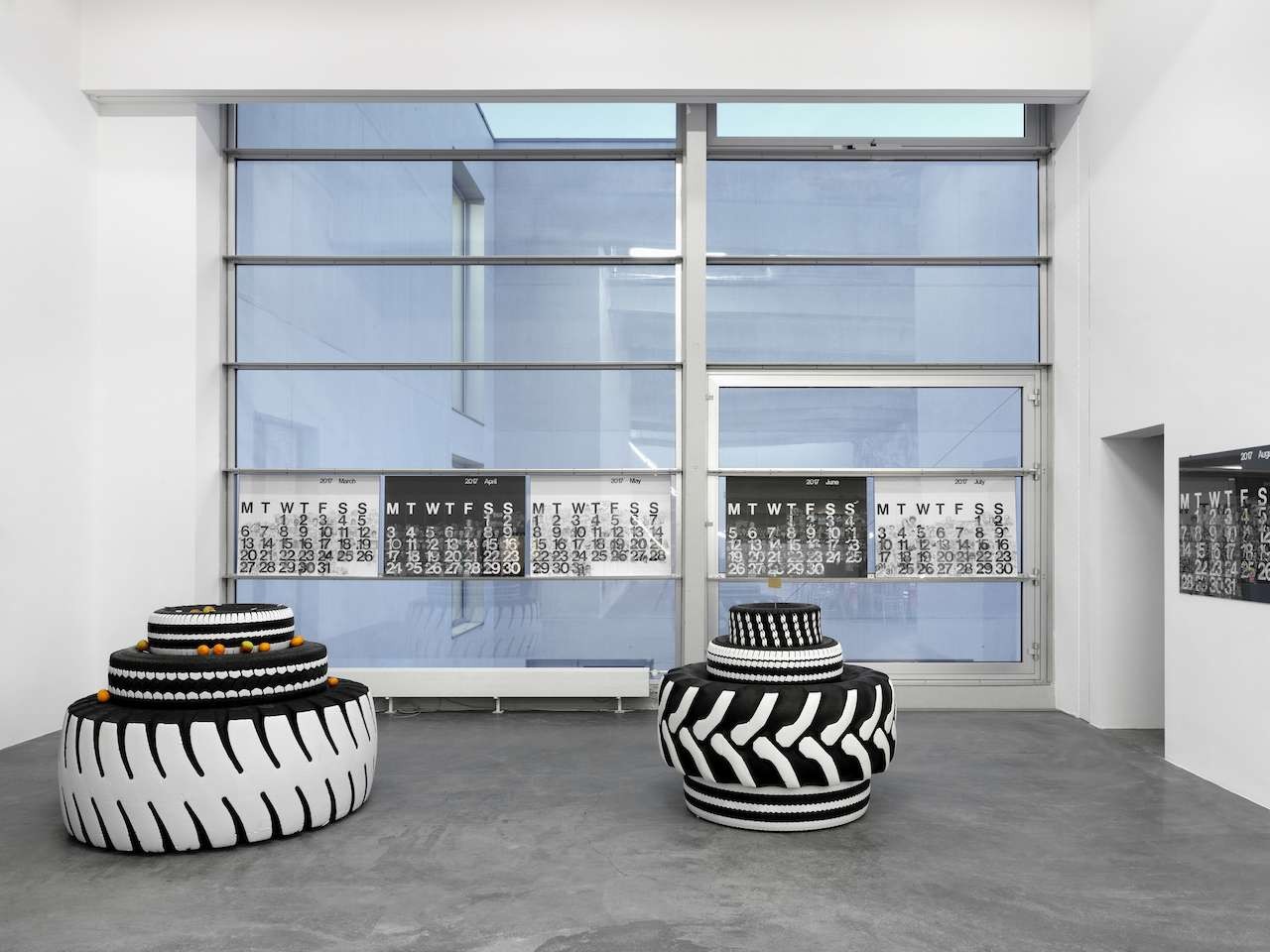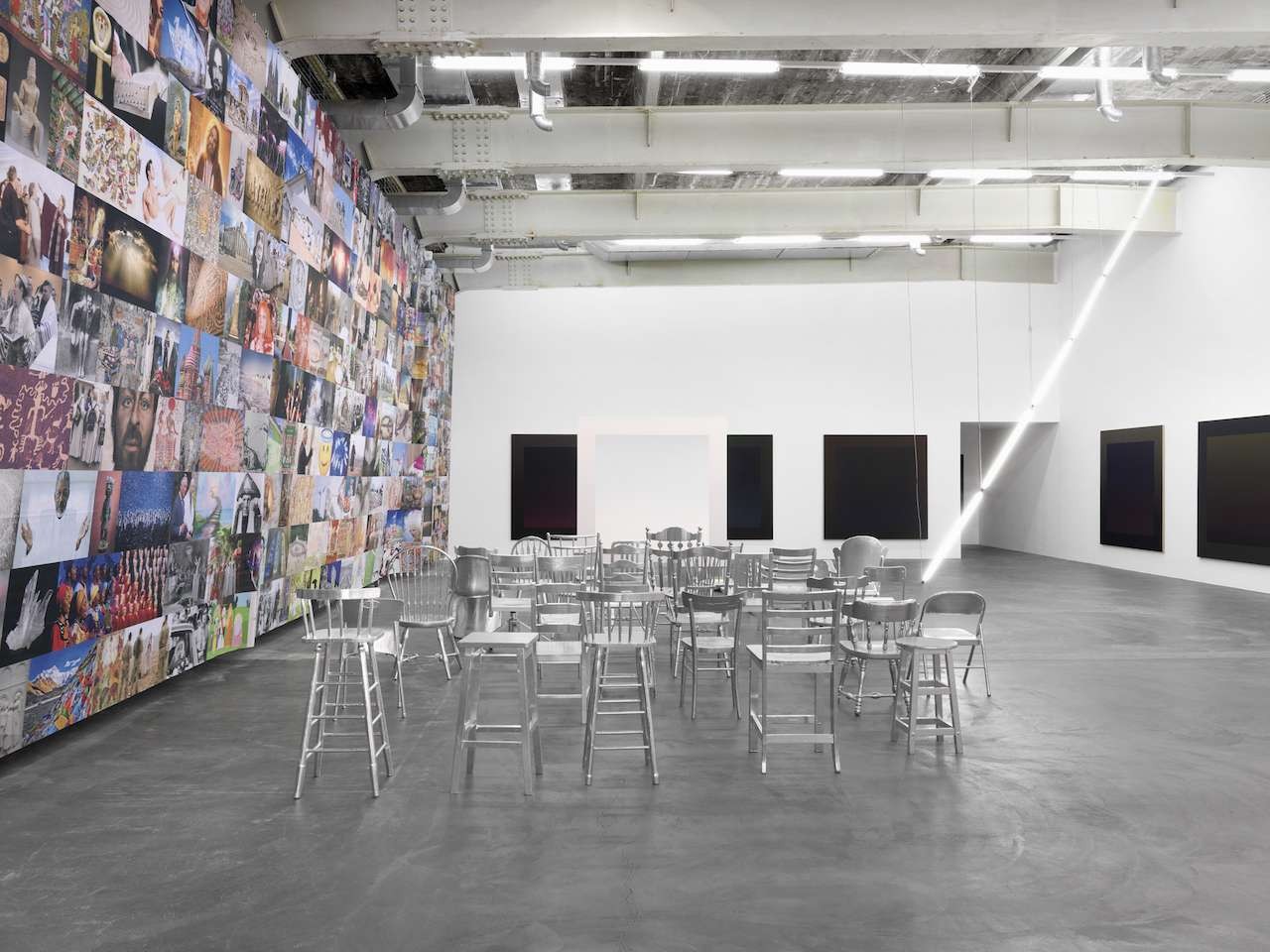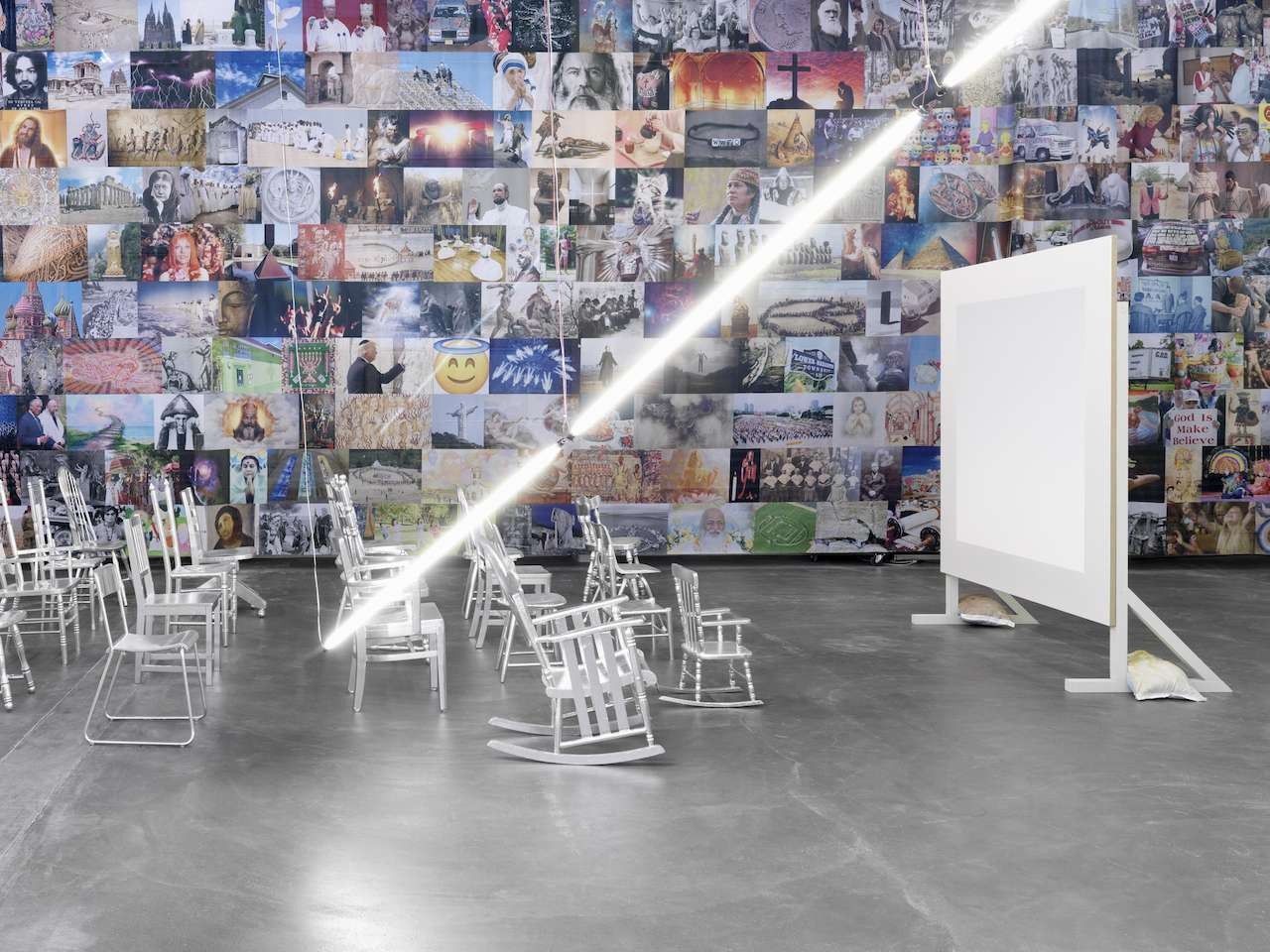Rob Pruitt
The Church
16 Dec 2017 - 13 May 2018
ROB PRUITT
The Church
16 December 2017 - 13 May 2018
"Rob Pruitt makes art easy" as the New York fashion photographer Cris Moor once put it. Exactly this is the challenge of Rob Pruitt’s art as it explores the fertile and shallow grounds both separating and unifying “art” and “easy”. What may seem easy, is in reality a risky and virtuous balancing act with one foot potentially stuck in the mud. Pruitt masters it to perfection, his is a performance in style, and ultimately an exercise in comedy and tragedy. It has produced a large and multiform body of work, which is light, enchanting – and always “something else” too. It started in the early 1990s in collaboration with fellow artist Jack Early for what became the infamous duo Pruitt & Early. They dissected the culture of “white teenage boys and male privilege” creating a portrait of the enemy. What now looks like a prescient analysis, became a sensation and led to a show at Leo Castelli. The show shifted the subject to African American culture and became a scandal. The artists’ career imploded and so did their personal relationship as a couple. They parted ways and found work outside the art world, mostly odd jobs. Towards the end of the decade, Pruitt went solo to further explore the territory where pop touches you. It has brought him respect and admiration, and sometimes criticism. Truth is, we fall in love with the images he convenes and the way he exposes their powers, while, at the same time, keeping them on hold. This is where we, the visitors, sneak it, or rather get drawn in; it is the space where the “something else” comes into play mastered by the artist’s light-handed joggling of desperation and wit as well as salesmanship and generosity.
All this appears to be a perfect fit for Kunsthalle Zürich, and it is. First of all, Rob Pruitt: The Church is a classic one-person exhibition with works spanning from 1999 to 2017. It introduces the American artist’s multifaceted practice including painting, sculpture, drawing, furniture, performative events, zines, everyday objects, political statements, and souvenirs. It includes The Congregation (2010), a group of found chairs unified with silver tape. The Congregation is part of a larger project of painting and sculpture referring to the Amish period of youthful abandon called “Rumspringa,“ and pays homage to the very human schism between the individual and the group. At the entrance of the exhibition, People Feeders (2010) welcome you. They are both sculptures and vessels for exchange, or as the French would call them: “vases communicantes.” One sculpture offers candies and pins with Pruitt’s edicts on art making; the other is a collection plate for rotating charities. Added to this are abstract Suicide Paintings forming chapel-like spaces. Suicide is human and controversial; all societies and religions have strong views on it – and it has become an important weapon. A thirtyfive meter long, digitally printed, gossamar curtain displays hundreds of images of religion, faith, and spiritual gatherings as they circulate throughout the World Wide Web. This is a mosaic about religiosity as if you google-searched spirituality. Contrasting this panorama of images are Pruitt’s Studio Calendars (2017) and Studio Lunch Tables (2014-16). As the titles imply, they come out of Rob Pruitt’s studio and reflect a collective accumulation of doodling and drawing by the artist, his assistants, visitors, friends and fellow artists. While the curtain explores the circulation of religious imagery, Studio Calendar and Studio Lunch Tables display the personal, human and sometimes off handed humor that one expects from an artist’s journal. A lightning system was improvised for the installation at Kunsthalle Zürich, as all walls and the entire ceiling have been removed for The Church.
Rounding out the exhibition will be a new version of Pruitt’s 101 Art Ideas You Can Do Yourself (1999). Available at the entrance of the Kunsthalle as a prayer book, Use A Museum As A Church Or A Church as A Museum (2017)invites you to become active. After all, the church, as the Kunsthalle, is a place where visitors have to invent and constantly renew their relationship with what the space offers. Just as people might choose to see an exhibition, they might visit a church for varying reasons: One may want to enjoy silence, look at architecture and art, find solace, be part of a community, enter into contact with the spiritual or communicate with god. For this reason, The Church is more than an exhibition, and more than a church. It is a community space very much inspired by Rob Pruitt’s Flea Markets, which he installed again and again in lieu of an art exhibition. Yet, it is also more than a community space, it is a center for grass root education as well. For the duration of the The Church, Kunsthalle Zürich will host numerous activities such as Sunday services organized by the Theological Seminary of University Zürich. We've invited Zurich-based artist Philip Matesic back with his weekly Theory Tuesdays (his project made me rediscovered pleasure in theory).
In collaboration with the activist platform openki.net, we offer self-organized courses, peer-to-peer learning that promotes education for everybody by anybody. Please post your courses online, share your knowledge or ask for it!
The Church is an exhibition cum community space cum church cum meeting point. And it is part and generously supported by the celebration of 500 years Zurich Reformation (ZH-Reformation: 500 Jahre Zürcher Reformation).
Daniel Baumann
All works Courtesy Rob Pruitt, Gavin Brown’s Enterprise (New York City) und Galleria Massimo de Carlo (Mailand)
The Church
16 December 2017 - 13 May 2018
"Rob Pruitt makes art easy" as the New York fashion photographer Cris Moor once put it. Exactly this is the challenge of Rob Pruitt’s art as it explores the fertile and shallow grounds both separating and unifying “art” and “easy”. What may seem easy, is in reality a risky and virtuous balancing act with one foot potentially stuck in the mud. Pruitt masters it to perfection, his is a performance in style, and ultimately an exercise in comedy and tragedy. It has produced a large and multiform body of work, which is light, enchanting – and always “something else” too. It started in the early 1990s in collaboration with fellow artist Jack Early for what became the infamous duo Pruitt & Early. They dissected the culture of “white teenage boys and male privilege” creating a portrait of the enemy. What now looks like a prescient analysis, became a sensation and led to a show at Leo Castelli. The show shifted the subject to African American culture and became a scandal. The artists’ career imploded and so did their personal relationship as a couple. They parted ways and found work outside the art world, mostly odd jobs. Towards the end of the decade, Pruitt went solo to further explore the territory where pop touches you. It has brought him respect and admiration, and sometimes criticism. Truth is, we fall in love with the images he convenes and the way he exposes their powers, while, at the same time, keeping them on hold. This is where we, the visitors, sneak it, or rather get drawn in; it is the space where the “something else” comes into play mastered by the artist’s light-handed joggling of desperation and wit as well as salesmanship and generosity.
All this appears to be a perfect fit for Kunsthalle Zürich, and it is. First of all, Rob Pruitt: The Church is a classic one-person exhibition with works spanning from 1999 to 2017. It introduces the American artist’s multifaceted practice including painting, sculpture, drawing, furniture, performative events, zines, everyday objects, political statements, and souvenirs. It includes The Congregation (2010), a group of found chairs unified with silver tape. The Congregation is part of a larger project of painting and sculpture referring to the Amish period of youthful abandon called “Rumspringa,“ and pays homage to the very human schism between the individual and the group. At the entrance of the exhibition, People Feeders (2010) welcome you. They are both sculptures and vessels for exchange, or as the French would call them: “vases communicantes.” One sculpture offers candies and pins with Pruitt’s edicts on art making; the other is a collection plate for rotating charities. Added to this are abstract Suicide Paintings forming chapel-like spaces. Suicide is human and controversial; all societies and religions have strong views on it – and it has become an important weapon. A thirtyfive meter long, digitally printed, gossamar curtain displays hundreds of images of religion, faith, and spiritual gatherings as they circulate throughout the World Wide Web. This is a mosaic about religiosity as if you google-searched spirituality. Contrasting this panorama of images are Pruitt’s Studio Calendars (2017) and Studio Lunch Tables (2014-16). As the titles imply, they come out of Rob Pruitt’s studio and reflect a collective accumulation of doodling and drawing by the artist, his assistants, visitors, friends and fellow artists. While the curtain explores the circulation of religious imagery, Studio Calendar and Studio Lunch Tables display the personal, human and sometimes off handed humor that one expects from an artist’s journal. A lightning system was improvised for the installation at Kunsthalle Zürich, as all walls and the entire ceiling have been removed for The Church.
Rounding out the exhibition will be a new version of Pruitt’s 101 Art Ideas You Can Do Yourself (1999). Available at the entrance of the Kunsthalle as a prayer book, Use A Museum As A Church Or A Church as A Museum (2017)invites you to become active. After all, the church, as the Kunsthalle, is a place where visitors have to invent and constantly renew their relationship with what the space offers. Just as people might choose to see an exhibition, they might visit a church for varying reasons: One may want to enjoy silence, look at architecture and art, find solace, be part of a community, enter into contact with the spiritual or communicate with god. For this reason, The Church is more than an exhibition, and more than a church. It is a community space very much inspired by Rob Pruitt’s Flea Markets, which he installed again and again in lieu of an art exhibition. Yet, it is also more than a community space, it is a center for grass root education as well. For the duration of the The Church, Kunsthalle Zürich will host numerous activities such as Sunday services organized by the Theological Seminary of University Zürich. We've invited Zurich-based artist Philip Matesic back with his weekly Theory Tuesdays (his project made me rediscovered pleasure in theory).
In collaboration with the activist platform openki.net, we offer self-organized courses, peer-to-peer learning that promotes education for everybody by anybody. Please post your courses online, share your knowledge or ask for it!
The Church is an exhibition cum community space cum church cum meeting point. And it is part and generously supported by the celebration of 500 years Zurich Reformation (ZH-Reformation: 500 Jahre Zürcher Reformation).
Daniel Baumann
All works Courtesy Rob Pruitt, Gavin Brown’s Enterprise (New York City) und Galleria Massimo de Carlo (Mailand)


